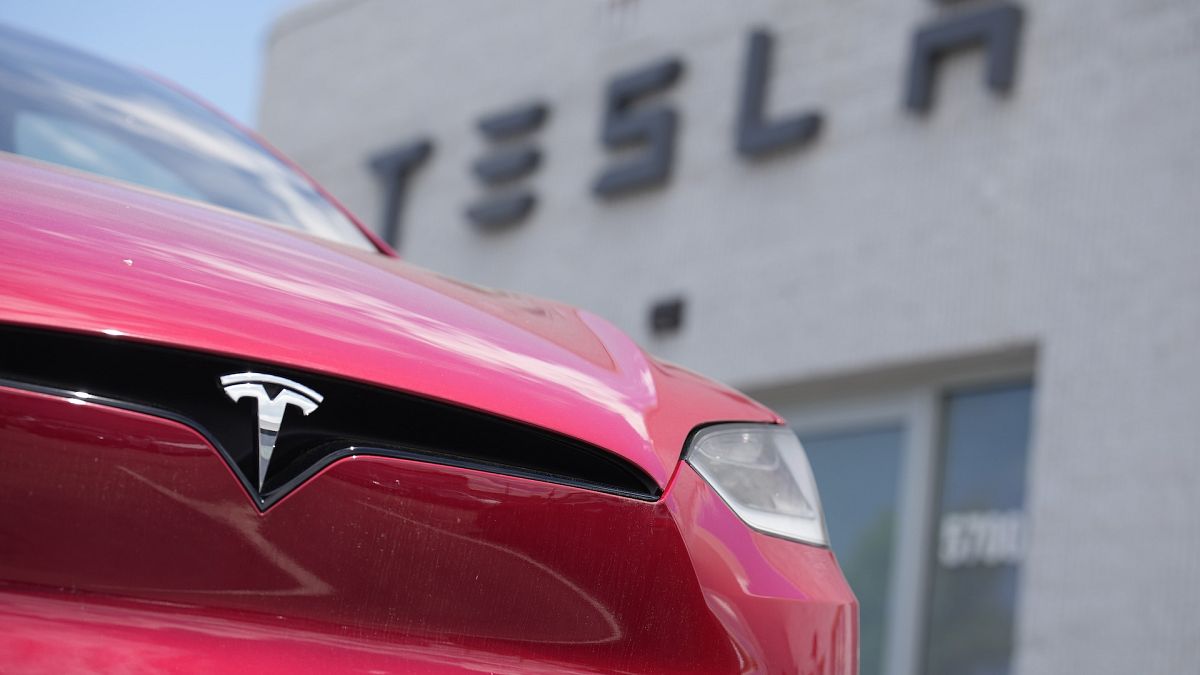Tesla Experiences Significant Decline in Stock Following Disappointing Q2 Results
Tesla shares plummeted more than 7% in after-hours trading on Tuesday after the company reported lackluster second-quarter results, continuing a troubling trend of declining electric vehicle (EV) sales. In a similar vein, Alphabet’s stock fell by 2% in extended trading due to underwhelming YouTube ad revenues. These two major tech earnings reports have contributed to a negative sentiment on Wall Street, with futures indicating a lower open on Wednesday. The pessimistic outlook is expected to reverberate through European markets, particularly as LVMH also failed to impress investors with its performance metrics.
Tesla Faces Growth Challenges in the Electric Vehicle Market
Tesla disclosed earnings per share of $0.52 (€0.48) on total revenue of $25.5 billion (€23.5 billion), falling short of the anticipated $0.62 and $24.6 billion estimates. Although the overall revenue exhibited a modest increase of 2% year-over-year, the core automotive sales segment experienced a 7% decline, marking the second consecutive quarter of downturn. The net income for the quarter stood at $1.8 billion (€1.66 billion), reflecting a staggering 42% decrease from the previous year.
Notably, Tesla benefited from a record regulatory credit revenue of $890 million (€820 million) in the second quarter, which contributed to a marginal 1% increase in gross profit compared to last year. Despite achieving a better-than-expected delivery figure of 443,956 EVs, this number represented a 4.8% decline year-over-year, extending the trend of decreased deliveries for two consecutive quarters. Price reductions and various incentives have further strained profit margins, with adjusted earnings margins slipping to 14.4%, down from 18.7% in the same quarter last year.
On a brighter note, Tesla’s energy generation and storage revenue doubled from last year, reaching $3 billion (€2.75 billion) in the second quarter. This suggests that Tesla is actively seeking new avenues for growth amid the slowdown in traditional automotive sales, which face increasing competition.
The company has postponed the unveiling of its highly anticipated Robotaxis from the originally scheduled date of August 8 to October 10. The Robotaxi is integral to Tesla’s broader strategy of developing fully autonomous vehicles utilizing Full Self-Driving (FSD) technology, positioning the company in the competitive AI landscape. CEO Elon Musk indicated that these AI-driven products, including Robotaxis and the Optimus humanoid robots, will be manufactured at the Austin facility. In April, Musk projected that Optimus would be capable of performing factory tasks by the end of 2024.
Looking ahead, Tesla anticipates a stronger quarter for car deliveries than in the second quarter and remains optimistic that the Cybertruck will start generating profits this year. Following the downturn on Tuesday, Tesla’s stock has declined by 10% year-to-date, as the EV manufacturer struggles to meet investor expectations regarding advancements in AI initiatives such as Robotaxi and humanoid robots, while EV sales continue to show a persistent decline.
Alphabet Surpasses Earnings Expectations but Falls Short on YouTube Advertising
Alphabet, the parent company of Google, reported total revenue of $84.74 billion (€78.12 billion) for the second quarter, reflecting a 14% increase from the previous year. Earnings per share reached $1.89 (€1.74), surpassing the expected $1.84 (€1.69).
The core business segment, Google Cloud, generated $10.35 billion (€9.54 billion) in revenue, a remarkable 28% increase quarter-over-quarter, and for the first time, surpassed the $10 billion (€9.18 billion) milestone. CEO Sundar Pichai remarked, “Our strong performance this quarter highlights ongoing strength in Search and momentum in Cloud.”
However, Google’s advertising revenue totaled $64.62 billion (€59.34 billion), marking an 11% year-over-year rise. Conversely, YouTube’s advertising revenue amounted to $8.66 billion (€7.98 billion), which, while up 13% from a year ago, fell short of the anticipated $8.95 billion (€8.22 billion). The company has set an ambitious target to achieve a combined annual run rate of over $100 billion (€91.83 billion) for Google Cloud and YouTube by the end of 2024, raising concerns about its ability to meet this goal.
Alphabet continues to invest heavily in AI development, with capital expenditures reaching $13.2 billion (€12.17 billion), exceeding the expected $12.2 billion (€11.2 billion). Chief Investment Officer Ruth Porat commented, “We’ve certainly seen the benefit of our strength in AI, AI infrastructure, as well as generative AI solutions for cloud customers.”
Additionally, the company’s self-driving car division, Waymo, reported revenue of $365 million (€336 billion) while incurring a loss of $1.13 billion (€1.04 billion) in the second quarter, which was higher than the expected loss of $1.07 billion (€980 million). Porat announced plans for a new multiyear investment of $5 billion (€4.6 billion) in Waymo during the earnings call on Tuesday.
In summary, Alphabet’s performance exceeded expectations but did not deliver the groundbreaking advancements in AI that investors were hoping for. Nevertheless, Alphabet remains one of the top performers among the Magnificent Seven stocks, with shares up 28% this year, largely driven by the AI boom.


